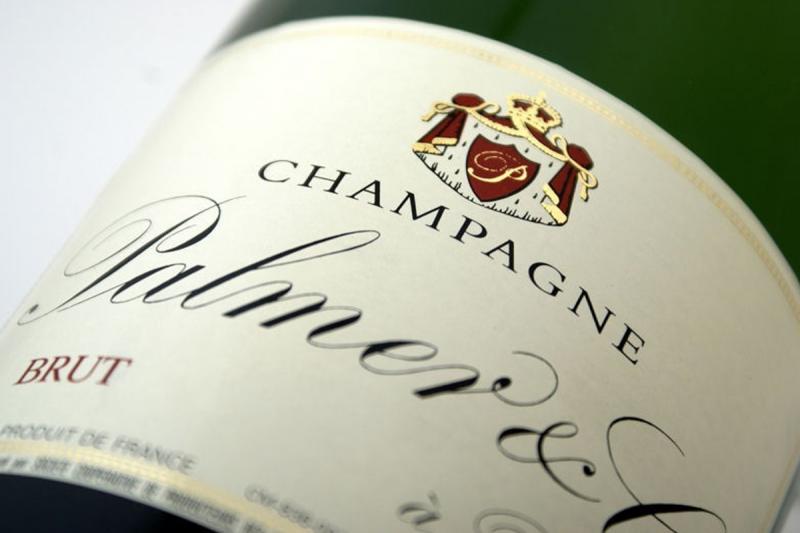Dosage is crucial when making Champagne
Palmer & Co. Champagne Brut Reserve cuvee is their entry NV wine. These won gold at the Champagne and Sparkling World Championship in 2014. Palmer claims 25-35 percent of the blend is from reserve wine. These are very acidic still wines stored for future blending. Palmer leaves the still wine on lees for 3-4 years. You will see that effort as some biscuit flavors and in body. This is fairly typical of reserve NVs because they are vintner blend wines and the goal is to keep them constant in nose, flavor and structure over time. Since these are Champagne, the wine is blended then fermented in the bottle by adding dosage, which is a solution of cane or beet sugar and wine, “liqueur d’expedition” or MCR (mout concentré rectifié), concentrated and rectified grape juice (recently the preferred method). The dosage is crucial to Champagne. It balances the naturally high acidity of the still wine and aids the aging process. Those who wish more info can go to this excellent site for a glossary of Champagne terms: www.champagneguide.net/information/glossary.
More important to most is fermentation in the bottles adds the bead or effervescence, spritz or bubbles, and these provide the mousse or the lovely foam that initially caps the wine when it is poured. Please try to capture Champagne mousse for a special treat. It is actually polite to sip your sparkler as soon as it is poured to achieve this goal. Sadly, too much sparkling wine is poured prior to the long-winded toast and is served warm, flat and sans bead. This may contribute to the often-stated, “I really don’t like champagne! No thanks!” Wine evaluation has its own set of rules. Think about it. Where else is a spittoon placed center stage at a comestible tasting? Anyhow, Palmer Brut Reserve NV won’t call for the spit bucket. You’ll want to savor it. It is pale lemon yellow, with good bead. The citrus nose is nuanced with brioche and floral notes. Some writers said vegetal but I find that a negative term in wine. Perhaps fennel and lime up front with peach and biscuit flavors. Finishes long and cleanly with citrus and biscuit repeating, 89 McD.
Caveat for the partially informed. This week Jeff wrote to ask about the Turnbull Wine Cellars Oakville Cab he saw on sale around $65. He claimed RP had awarded a 95-point score and wrote that sounded like a great deal. His note highlighted a common ploy used by unscrupulous marketers. Although Mr. Parker may inflate his scores from time to time, this sounded fishy to me. Had Jeff written Turnbull Wine Cellars Cabernet Sauvignon Oakville Black Label, I would have jumped all over it. These were indeed touted at 95 points by RP and it was a well-deserved review. We sampled some at Willi’s Wine Bar this spring. We also sampled the just plain Turnbull Oakville Cab, although there is nothing plain about it. Neither is anywhere close to ready.
Unfortunately there is very little Black Label around and the bit there is runs well over $170/bottle. Notes read very dark violet, powerful but already refined nose surprisingly redolent with cassis, graphite, black cherry and violet aromas. These did take a bit of coaxing and aeration. Very fine tannins from well-extracted juice. Needs minimum 5-7 years in the cellar; good thru at least 2040. The Oakville Cab rates 93 McD points and is priced under $65. This is also a highly extracted, huge wine but done with a deft touch. Will be ready in 2-3 years. On a separate note, big buck buyers who like to drink Cab, take a look at Somerston Estate Celestial Block 96 Cab Napa Valley. I was able to sample most of the true big boys and this, at $325, was the best of the bunch. Somerston has long been noted for its grapes but under Craig Becker their wines have truly come on. Great extraction, dark cherry color, lovely cherry aromas with some coco and barrel spice aromas. Flavors followed nose; add in a bit of olive. Terrific acid balance and fine tannic grip leads to a very long, clean finish with the fruit following through. Needs cellar time; good at least 20 years. Don’t speculate on these, drinkers only.

















































